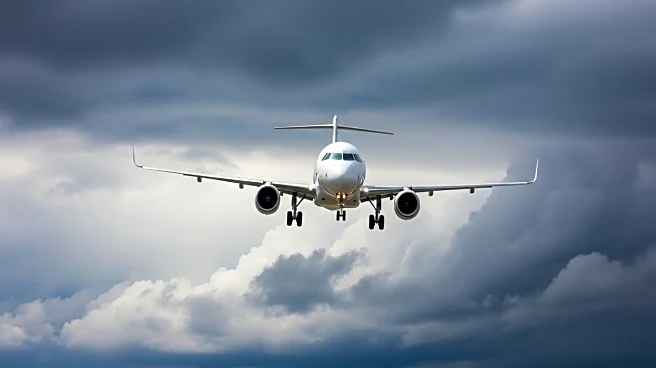What's Happening?
A new study from the University of Reading highlights the growing risk of clear-air turbulence for airlines due to climate change. The research indicates that warming temperatures are causing increased atmospheric instability, leading to higher windshear at typical aircraft cruising altitudes. This instability is expected to rise by 16-27% from 2015 to 2100, making clear-air turbulence more likely. The study notes that the northern hemisphere mid-latitudes will experience a 34% increase in vertical windshear, while the southern hemisphere will see a 27% rise. These changes pose challenges for airlines in forecasting and avoiding turbulence.
Why It's Important?
The increased risk of clear-air turbulence has significant implications for airline safety and operations. Clear-air turbulence is difficult to predict, and unexpected events can lead to injuries for passengers and crew. As atmospheric instability grows, airlines may face more frequent and severe turbulence incidents, impacting flight schedules and passenger comfort. Improved forecasting and navigation strategies will be essential to mitigate these risks. The study underscores the need for the aviation industry to adapt to changing climate conditions to ensure safety and efficiency.
What's Next?
The University of Reading plans to conduct a follow-on study to assess the frequency and severity of clear-air turbulence events. This research will aim to improve forecasting accuracy, which currently stands at around 70%. Enhanced data could be shared with airlines and air navigation service providers to better avoid high-risk areas. As climate change continues to affect atmospheric conditions, ongoing research and technological advancements will be crucial for the aviation industry to adapt and maintain safety standards.











